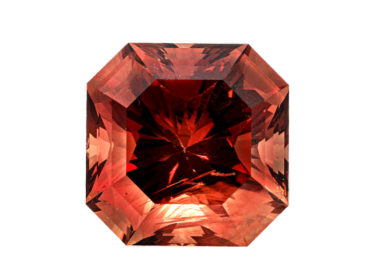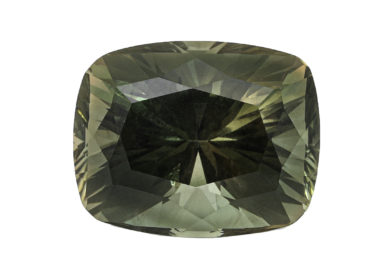Oregon Sunstone Rough
A Unique and Versatile Gemstone
Oregon Sunstone is unlike any other gemstone in the world. It can be transparent, have a natural red and/or green color, have a combination of colors and be dichroic or even trichroic in nature. Faceted, Fantasy Cut and Carved Oregon Sunstones all have our admiration and appreciation. The where and when of the formation of Oregon Sunstone deposits is more accurately described by Emily Cahoon, Ph.D. , Volcanologist.
(please note: the image of the Oregon Sunstone rough attached to this post was provided by another source and is not a part of the American Gemstone collection and will not be donated to any museum)
Volcanic Origins of Oregon Sunstone
Contributing Volcanologist – Dr. Emily Cahoon, Ph. D.
Oregon Sunstones have been identified at two distinct locations: 1) the Lakeview deposit and 2) in the Ochoco Mountains, Harney County. Sunstones from both locations are hosted within basaltic lava flows of the Columbia River Basalt Group (CRBG). These flows represent a vast outpouring of basaltic lava that covered the Pacific Northwest between ~17 and 16 million years ago! Volcanologists refer to these eruptions as continental flood basalts, and they are some of the largest volcanic eruptions in earth’s history. While large plagioclase feldspar crystals have been documented in numerous flood basalt provinces around the world, these other plagioclase crystals do not contain visible copper creating various colors and color changes.
Volcanologists study the mineralogy, location, age, and geochemistry of individual flood basalt lava flows. The geochemistry, or studying what elements are in a lava flow, serves as a kind of “fingerprint”, telling volcanologists about the magma that these lavas originated from. Using this information, volcanologists divide lava flows of the CRBG into four distinct formations – one of which is the Picture Gorge Basalt. Based on current fieldwork and laboratory data, the Picture Gorge Basalt is the only CRBG formation to host Sunstones.
The Picture Gorge Basalt lavas that contain Sunstones are often reddish-brown in color and highly altered. This textural observation has led previous workers to interpret that the copper went into the crystal after it formed and was erupted, possibly through hydrothermal fluids. However, it is still undetermined whether the introduction of copper into the plagioclase crystal occurred when the crystal was growing in the magma (i.e., magmatically formed), or if copper diffused into the crystal after it was formed and erupted, occurring near the surface (i.e., hydrothermally formed).
Ongoing research aims to determine when and how Sunstones formed, in other words – when and how copper got into these feldspar crystals! Leading the charge is volcanologist and geochemist Dr. Emily Cahoon, who collects and analyzes elemental, isotopic, and age data of Sunstones and the lava flows to learn more about their formation. Based on current data, Dr. Cahoon hypothesizes the copper went into the crystals magmatically (when the crystal was forming in a magma chamber), however both a magmatic and hydrothermal origin are feasible. The magmatic origin is favored for a few reasons, three are summarized here:
- First, the two identified Sunstone locations are likely from two discrete lava flows, not one lava that flowed from one location to the other. This is interpreted from the observation that with so many crystals, these lavas would be highly viscous, or resistant to flow (think about how fast room-temperature honey moves). Additionally, for the copper to be introduced into the crystal post-formation, the exact same processes would need to occur independently ~80 miles apart – but nowhere else in the world! Not impossible, but unlikely.
- Secondly, coloration within Sunstones is always concentrated within the cores of the crystals. If the copper was diffused into the crystal after it formed (and near surface), the color should be concentrated along the exterior or rim of the crystal (not the core).
- Finally, there are micro-inclusions of a unique very high-temperature pyroxene mineral within Sunstones. The presence of this mineral suggests that the feldspar crystals rapidly ascended from the magma chamber to surface, because the temperatures required to form that mineral cannot exist near the earth’s surface.
Oregon Sunstone is an extraordinary gemstone formed through unique magmatic, volcanic, and possibly hydrothermal processes – the full story of which has yet to be unraveled.
Inquires?
Contributing Volcanologist: Emily B Cahoon, Ph.D Email: emily.cahoon@oregonstate.edu


